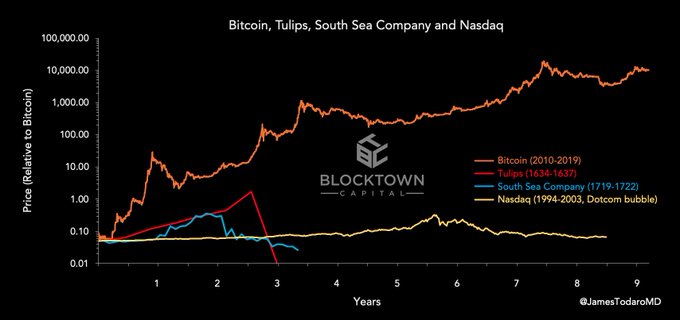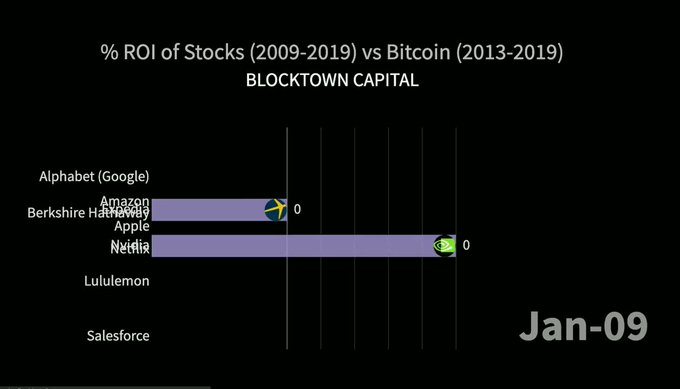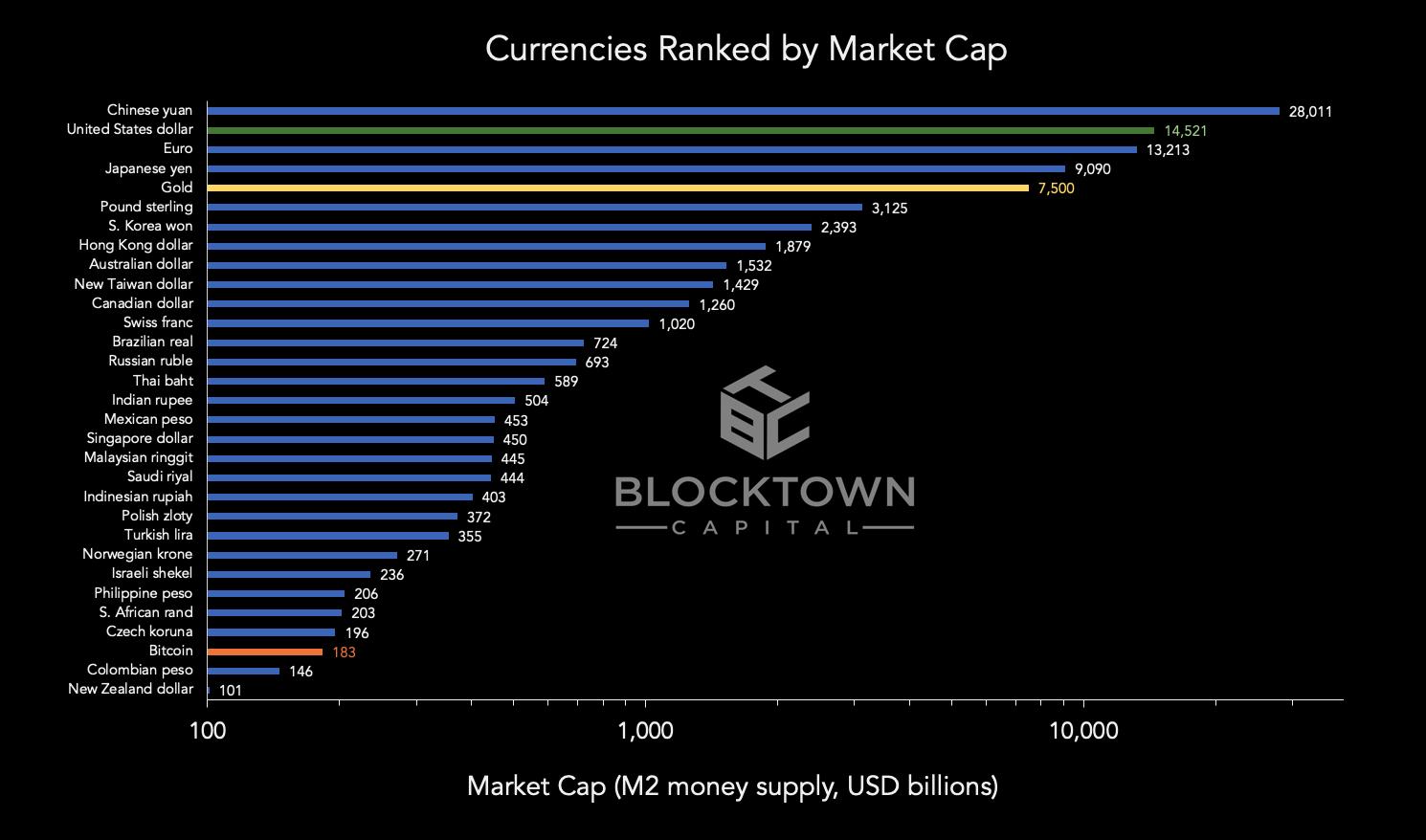
If all goes well, Binance Venus could be a historically significant development.
“I’ve known CZ, the founder of Binance, as a friend for 10 years,” said Helen Hai, head of Binance Charity.
“He was being featured by Forbes on the front page, you know, last February [2018]. And then in March, we were having a conversation about that… we were discussing purpose. The purpose of being a person, and also the purpose of being a company.
“So one of the things I discussed with CZ, he asked my advice in terms of Binance. I said, ‘I think Binance needs to think of moving from success to significance.’ What I mean by significance is not just a gigantic change, you know, in the crypto world. We need to think how we can actually make contributions to the global community. This is to enable the huge penetration, adoption of crypto. And CZ totally agreed with me.
“So during that lunch, CZ said to me, ‘Helen, I totally agree with your idea. Why don’t we set up a Binance Charity blockchain charity foundation to use blockchain technology to support the bottom billion?‘ And he invited me to head up the charity foundation.
“I didn’t say yes, immediately.
“I said to CZ, during that lunch in March last year, I said to him, ‘Let’s go to Africa together. Now you and me, you know, we think this technology will help the bottom billion. But we should hear from the bottom billion how they feel.’ ”
During the meeting, the president of Uganda… he asked the very basic question itself: What is money?”
“So I took CZ to Togo and Uganda.
“In Uganda, we met the president of Uganda. What is so impressive, during the meeting with the president of Uganda, even the president – he’s a 74-year-old, old man, not really technologically advanced – but he asked the very basic question itself: What is money?
“And then what is this note? You know, currency, what is it? And after 15 minutes, he just said, ‘CZ and Helen, you know what I think? I think Africa should not be followers anymore. We want you coming here to work with us. In this Fourth Industrial Revolution, we also want to become leaders working with you, to drive this change.’
“So, after the meeting with the president of Uganda, I accepted CZ’s invitation to head up the foundation. And then finally, we decided to set up the first Africa exchange in Uganda. Because one of the things the president told us is, ‘Today we have a choice… today, based on the free transfer of information, we have a choice to work with the people we trust, to go in the direction we want to go.’
“He actually wants Uganda becoming a leader to drive the whole of Africa in the front line of this Fourth Industrial Revolution. So for me, for CZ and me, it’s really very much mission-driven. And we felt, today a lot of people are talking about development, but very few people can roll up their sleeves, you know, [and] actually be in the front line to really work out the solution.
“So that was me last year.”
I was really glad the president of Malta agreed to be on our senior advisory board.”
“We decided to set up the first Binance Uganda exchange, which provided the basic infrastructure for us, and most importantly, the training for local use. So we sponsored the first African blockchain conference in Uganda… and are sending a lot of messages to young people, you know. They need to be thinking about how to use technology, helping their countries on economic transformation.
“And then, what I did then, in the following three months, we’ve formally registered independently in Malta as the BlockChain Charity Foundation… I was really glad the president of Malta agreed to be on our senior advisory board.
“I’ve been putting a senior advisory board including the President of Malta, the ex-president of Mauritius, and also the finance minister of Djibouti, then the former chief economist of the UN, and also the chairman of the Africa acting bank. That kind of calibre of people, you know? Our senior advisory board is really putting up our agenda… our central mandate is using blockchain to empower the bottom billion.”
The foundations of Venus
On 19 August 2019, Binance announced Venus. It’s a localised stablecoin project that aims to run on Binance Chain. Although exact details are still scant, it’s safe to assume that the initiative is broadly focused on banking the unbanked, changing the world, ushering in a blockchain utopia, etc.
Based on the information currently available, the foundations of Binance Venus appear to include the following:
A strong roster of governments, non-government organisations (NGO) and business partners.
A high degree of blockchain awareness at the highest levels possible as well as for end users.
The Binance Chain blockchain infrastructure itself.
Widespread cryptocurrency education for end users.
Localised stablecoins.
At this point in Hai’s recounting, we’re coming up to the second half of late 2018. Now Binance is active on the ground in Uganda, Malta and elsewhere, and Binance Charity’s high-powered advisory board is helping tick off the first point of Venus’s foundation.
Feel free to actually tick off the first point in the list above if you want to make this a bit more interactive.
A multi-pronged approach
The other boxes would get ticked as Binance Charity started pursuing a multi-prong, necessity-driven approach.
One prong is ongoing advocacy, driven by cryptocurrency’s relatively steep learning curve, dubious reputation and immature state.
“Because right now, this is still an early stage of the industry,” Hai explained. “So we think advocacy from the top down is very important.”
This included two major events for Binance in 2018. First, a roundtable with heads of states and industry leaders in the UN general assembly last year, Hai said. And second, Binance’s hosting of the first United Nations Blockchain for Sustainable Development conference in October 2018. There’s undoubtedly more to come too.
This helps tick off that second point.
The second prong is Binance Chain itself, driven by the necessity of solving the leaky bucket/basket problem that is endemic to all charitable organisations. This refers to the money that leaks out of every donation into overhead such as administration, marketing, outright corruption and other factors.
“There’s no infrastructure currently between the third party NGO to the end beneficiary,” Hai explained. “So we found this is exactly where blockchain technology could help. So we decided to use our finance to build up this infrastructure.”
Binance Chain would be the blockchain for the job. It was first announced in March 2018, the same month Hai and CZ discussed the purpose of Binance and life in general over lunch.
“We know how hard it is to create a business, however, creating history is even harder,” CZ said at the announcement of Binance Chain.
Binance Chain hit testnet in February 2019 and went live in April 2019, ticking off the third box in the process.
On an interesting side note, Binance Chain uses Tendermint BFT consensus, built with Cosmos SDK, while Tendermint co-creator and Cosmos’s Interchain Foundation technical director Ethan Buchman is reputedly a long-time fan of the idea of localised cryptocurrency systems of the kind that Binance Venus aims to build out.
Blockchain for the bottom billion
Ticking off the third and fourth boxes will be an ongoing process, but the world’s bottom billion is a good place to start.
“We launched our first pilot early this year in Uganda, which is exactly making charity transparent,” Hai said. “So today, if you go to our website, what we did basically, we empowered the end beneficiaries with a crypto wallet.”

As pictured above, SHI***ASI and WAN***AEL are the names of households in Uganda (of six and three people respectively) who received donations through Binance Charity, specifically as part of Binance’s Empower Bududa landslide relief effort. Both are also registered Binance users with their own crypto wallets, who have passed AML/KYC.
“The most important thing is we need to empower the end beneficiary with a crypto wallet,” Hai said. “This is also giving them a crypto ID because the bottom billion people are currently being excluded in the existing financial infrastructure. So we’re really using crypto to empower them.
“In this whole process – we find this very important – we’re building up the fundamental blockchain infrastructure for the bottom billion.
“And in terms of the industry, we also think it’s very important because – thinking about the seven billion people globally – currently, the big players, including the Binance exchange, we are only creating liquidity for the middle class proportion of it. So what we’re doing is we’re actually building new highways, creating liquidity between middle class globally to the bottom billion.
“And once we empower the bottom billion with crypto wallets [and] mass adoption of crypto, there is more crypto liquidity among them. So this is really what we really want to see.
“We want to see the industry grow from 1% of people up to 10% because that is very healthy growth for the industry. So we found with the bottom billion that’s being excluded in the financial infrastructure, blockchain is the best solution for them.”
This is not a controversial take. On the contrary, one of the few things everyone in cryptocurrency agrees on is that emerging economies can benefit the most from cryptocurrencies.
- Populations in emerging economies are often disproportionately dependent on remittances, and so can get commensurately larger savings from cheaper international transfers. For perspective, Uganda’s incoming remittances annually are equivalent to about 5% of its GDP, while the USA’s incoming remittances annually are equivalent to about 0.034%, according to the Pew Research Center.
- Emerging economies are more prone to fiat currency volatility.
- The relative lack of bank infrastructure in emerging economies drives strong demand for alternatives. Mobile payments took off faster in sub-Saharan Africa than anywhere else for this reason.
Anyone who’s remotely serious about cryptocurrency adoption should be looking at how to best serve the bottom billion.
Binance Charity is also partnered with a range of nonprofit organisations, including Mercy Corps (which is also a founding member of Facebook Libra) to help foster the use of blockchain in more situations.
“Now we’re building up the technology,” Hai said. “It’s not just for Binance use. We actually want it for the whole industry, and for the big players in the industry. Because that’s the beauty of the technology. We want to make the world a better place. We want to see more beneficiaries. The bottom billion people, they can be empowered with the technology of blockchain to help them lift up on economic transformation.”
Tick off that fourth box.
Enter the stablecoin
One of the first stablecoins on Binance Chain was the pad-backed Pink Care Token (PCAT), whose value is pegged to a year’s supply of sanitary pads.
It works almost exactly like any other collateralised stablecoin. Funds enter a custodian wallet where they are frozen, and a new stable value token is issued based on the funds locked away.

The PCAT stablecoin is an extremely effective way of ensuring beneficiaries get what they need. It avoids the high costs of trying to directly distribute sanitary pads and generally offers many of the same benefits of direct cash donations while going a long way towards preventing misappropriation of funds.
This system is also a clear example of how the different elements of the Binance machine are working together. Note how this system requires suppliers and beneficiaries to both have their own crypto wallets and how, in the end, the supplier gets their money by selling PCAT tokens on the Binance Uganda cryptocurrency exchange.
“If you buy one coin, you can support one girl’s whole year… so this is actually a stablecoin backed with tampons. When you purchase that coin, you know exactly what the end cost is,” Hai said.
This kind of stablecoin system can be replicated across a wide range of situations, and with the right technical and logistics infrastructure, you can back a stablecoin with all kinds of things.
For example, the Australian government has previously tested “smart money” tokens for disability services, with each token functionally being a stablecoin redeemable for specific disability services. Localisation adds another dimension. For example, Universal Basic Income initiatives could be adjusted (in an academically interesting if not necessarily practical way) with stablecoins pegged to the average cost of living in the beneficiary’s location.
PCAT and other initiatives served as a good proof of concept, and it looks like Binance Venus itself will be ticking that fifth box if all goes well.
Binance Venus and the Fourth Industrial Revolution
“My passion has always been finding a model to support the bottom billion by looking at the world’s 7.6 billion population globally,” Hai said. “My passion is always trying to help the bottom billion jump start the economic transformation for poverty reduction.”
This objective was complicated, Hai said, when she looked at the economic transformations following the arrival of each Industrial Revolution around the world.
“For the Second Industrial Revolution, the Asian countries leapfrogged on the economic transformation,” Hai said. “And then look at the last 30 years. Where’s the Third Industrial Revolution, dominated by the Internet? What happened?”
Some explanation may be necessary here.
Industrial revolutions have historically created enormous wealth and raised millions of people out of poverty by giving people a standard of living that would have been impossible only a few years before.
-
What was the First Industrial Revolution?
-
What was the Second Industrial Revolution?
-
What was the Third Industrial Revolution?
But there are two big problems with all these industrial revolutions.
The first is that these revolutions didn’t hit every country at the same time.
In 1800, almost everyone everywhere was poor.

Fast forward 175 years and those industrial revolutions created a distinct surge of wealth, primarily in Europe, while Asia-Pacific and Africa were largely left behind.

Jump forward 40 more years and it’s a very different picture. Asia-Pacific is largely over that hump, thanks largely to the statistical impact of China’s sweeping economic reforms from 1976 onwards. But for reasons too complicated to be flippantly addressed here, Africa is largely left behind.

Source
The second problem is that the nature of the information technologies that came with the Third Industrial Revolution also helped cement inequality.
An increasingly automated world required higher levels of education, which helped create and reinforce the have and have-not divide. Meanwhile, the sheer pace of technological advancement, coupled with the nature of investment, means profits from new developments tend to be siphoned towards the best-capitalised income brackets. Certain political and economic decisions certainly don’t help either.
Hai characterised this kind of problem as the inherent friction between liberty and equality, where liberty means having the freedom to pursue maximum efficiency and profitability, but equality giving a reason not to.
Liberty and equality, which are often held up as inseparable twin ideals, are also kind of mutually exclusive at their extremes.
“In this part of the world, we’re celebrating technological advancement,” Hai said. “But if we’re looking at the world, 1% of the population actually is holding 90% of the global wealth. The world didn’t become a better place, in a way, with the Third Industrial Revolution.
“So what I really felt was, in the Fourth Industrial Revolution, entrepreneurs also need to do something even better, which is not only just celebrate the technological advancement for the upper class, it also needs to think globally. We need to empower the bottom billion.”
This Fourth Industrial Revolution is currently underway. It includes blockchain, cryptocurrency, quantum computing, nanotechnology, biotechnology and many more. One of the ideas behind Binance Charity is to attempt to deliberately and directly empower the bottom billion with some of the fruits of this technological revolution.
“This is something I found that I was so passionate about after attending World Economic Forum last year,” Hai said.
The World Economic Forum last year was in January 2018. The month after that, Forbes would put CZ on the cover of its magazine, and the month after that, Hai and CZ would talk about how to make Binance significant rather than just eye-wateringly profitable.
This was followed closely by the announcement of Binance Chain, the move to Malta, the meeting with the president of Uganda and the establishment of Binance Uganda, the creation of Binance Charity’s influential advisory board, the spread of blockchain and cryptocurrency education around Africa, the Binance Chain testnet, the Binance Chain mainnet, the development of sanitary pad stablecoins and now the announcement of Binance Venus – a project for issuing local stablecoins around the world with the apparent goal of stepping in to bank the unbanked. And this is all occurring while Facebook’s Libra is faltering under a regulatory glare.
“This is definitely something Binance is doing,” Hai said. “We see ourselves using innovation to lead the industry. Blockchain is not just to make individual wealth… blockchain crypto should be a very powerful tool to human beings, to find the fine balance between equality and liberty. Because those two things, you know… it’s difficult because on one side you want liberty. You are pushing efficiency, but then you forgot equality.
“Something CZ and I have always believed is something Nelson Mandela once said. He said ‘It’s always impossible until it’s done.’ …that’s exactly what we’re doing.”
Note: Finder interviewed Helen Hai prior to the announcement of Binance Venus. Hai’s comments in this interview do not refer directly to Venus, and any connections implied in this piece were extrapolated rather than confirmed. Also, the president of Uganda wants to kill gay people and has a shocking human rights record.
Don’t miss out! Follow Crypto Finder
Also watch

CloseCross CEO Vaibhav Kadikar: How decentralised prediction markets will change the world
Disclosure: The author holds BNB and BTC at the time of writing.
Disclaimer: This information should not be interpreted as an endorsement of cryptocurrency or any specific provider, service or offering. It is not a recommendation to trade. Cryptocurrencies are speculative, complex and involve significant risks – they are highly volatile and sensitive to secondary activity. Performance is unpredictable and past performance is no guarantee of future performance. Consider your own circumstances, and obtain your own advice, before relying on this information. You should also verify the nature of any product or service (including its legal status and relevant regulatory requirements) and consult the relevant Regulators’ websites before making any decision. Finder, or the author, may have holdings in the cryptocurrencies discussed.
Latest cryptocurrency news
Picture: Shutterstock
 Does fear of failure keep you from starting exploring new ventures?
Does fear of failure keep you from starting exploring new ventures?





































